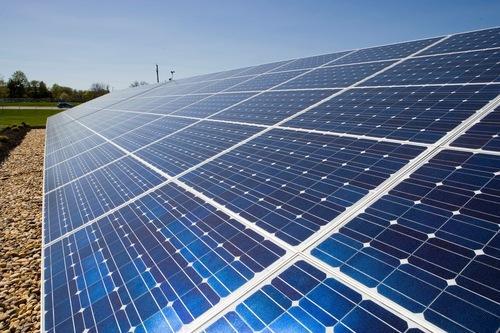Solar power is the cleanest, most reliable form
of renewable energy .It can be used in several forms to power your home or
business. Photovoltaic modules, called solar modules, are the
key components used to convert sunlight into electricity. This (PV) panels
convert the sun's rays into electricity by exciting electrons in silicon cells
using the photons of light from the sun. Light striking the crystals induces
the photovoltaic effect which generates electricity. The electricity produced
is called direct current (DC) and can be used immediately or stored in a
battery.
When
light energy strikes the solar cell, electrons are knocked loose from the atoms
in the semiconductor material. An electrical circuit is formed when electrical
conductors are attached to the positive and negative sides, the electrons
captured in the form of an electric current -- that is, electricity. Solar
cells produce direct current electricity from sunlight which can be used to
power equipment or to recharge a battery.
What
is the principle of photovoltaic cells?
The
effect due to which light energy is converted to electric energy in certain
semiconductor materials is known as photovoltaic effect. This directly converts
light energy to electricity without any intermediate process. The
PV effect was discovered in 1954, when scientists at Bell Telephone discovered
that silicon (an element found in sand) created an electric charge when exposed
to sunlight.
A photovoltaic cell (PV cell) is a
specialized semiconductor diode that converts visible light into direct current
(DC). Some PV cells can also convert infrared (IR) or ultraviolet (UV)
radiation into DC electricity. Large sets of PV cells can be
connected together to form solar modules, arrays, or panels.
The
joint between two semiconductor is
called the P-N junction. Sunlight striking the photovoltaic cell is absorbed by
the cell. The energy of the absorbed light generates particles with positive or
negative charge (holes and electrons), which move about or shift freely in all
directions within the cell.

Comments
Post a Comment